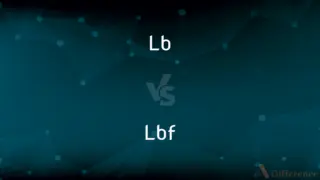Median vs. Tertile — What's the Difference?
By Tayyaba Rehman & Fiza Rafique — Updated on March 21, 2024
Median splits data into two equal halves, indicating the middle value, whereas tertiles divide data into three equal parts, showing distribution across three segments.

Difference Between Median and Tertile
Table of Contents
ADVERTISEMENT
Key Differences
The median is a statistical measure that identifies the middle value in a given dataset when the values are arranged in ascending or descending order. It effectively bisects the dataset into two equal parts, where half of the data points are below the median and the other half are above it. On the other hand, tertiles extend this concept by dividing the dataset into three equal parts, each representing a third of the data's distribution. This allows for a more nuanced view of the data's spread and central tendency.
While the median is particularly useful for understanding the central tendency of skewed distributions or when dealing with outliers, as it is less affected by extreme values than the mean, tertiles provide a deeper insight into the data’s distribution. Tertiles reveal more about the dispersion and the presence of subgroups within the dataset, whereas the median focuses on the central point.
Calculating the median involves ordering the data and finding the middle value or the average of the two middle values in an even-numbered dataset. In contrast, calculating tertiles involves more steps: first determining the median, then finding the medians of the data points to the left and right of the overall median, effectively creating three segments of the dataset.
The median is widely used in fields like real estate to understand housing prices, in income distribution to identify the middle income, and in education to assess test scores. Tertiles, on the other hand, are often used in more detailed statistical analyses, such as in finance to categorize investment performance into bottom, middle, and top thirds, or in health sciences to assess the distribution of clinical trial data.
Both median and tertiles are measures of central tendency, but they serve different purposes. The median provides a simple, clear-cut view of the middle of a dataset, making it ideal for general analyses. Tertiles, however, offer a more granular view, allowing for the identification of trends within subsets of the data, which can be crucial in more complex analyses or when segmenting data is necessary.
ADVERTISEMENT
Comparison Chart
Definition
The middle value of a dataset when ordered.
Points that divide data into three equal parts.
Purpose
To find the central point of a dataset.
To understand distribution in thirds.
Calculation
Order data, find middle value(s).
Find median, then medians of two halves.
Use Case
General analysis, skewed data.
Detailed analysis, segmenting data.
Sensitivity
Less sensitive to outliers.
Offers detailed distribution insight.
Common Fields
Real estate, income, education.
Finance, health sciences, statistical analysis.
Compare with Definitions
Median
The value separating the higher half from the lower half of a data sample.
In a set of test scores, the median score is the one in the middle.
Tertile
Points that divide a dataset into three equal parts, showing the distribution.
In a set of ages, the first tertile might show the younger third of a population.
Median
In even-sized datasets, it's the average of the two middle numbers.
The median of [2, 3, 5, 7] is 4, the average of 3 and 5.
Tertile
Used to categorize data into bottom, middle, and top thirds for analysis.
Tertiles are used in finance to rank investment performance.
Median
Calculated by arranging all numbers in ascending order and finding the middle one.
For the set [3, 5, 9], the median is 5.
Tertile
Calculated by first finding the median, then the median of each half.
To find tertiles of [1, 2, 3, 4, 5], first find the median (3), then the medians of [1, 2] and [4, 5].
Median
A central point that represents typical values in a dataset.
The median income shows the income level separating the higher half from the lower half in the population.
Tertile
Provides a more detailed view of a dataset's spread than the median.
Tertiles can reveal more about the distribution of test scores across ranges.
Median
Less affected by outliers and skewed data.
Median house prices provide a more accurate market trend than the average.
Tertile
Helps in identifying trends within subgroups of a dataset.
Health researchers use tertiles to analyze clinical trial outcomes by breaking down data into more manageable segments.
Median
In statistics and probability theory, the median is the value separating the higher half from the lower half of a data sample, a population, or a probability distribution. For a data set, it may be thought of as "the middle" value.
Tertile
(statistics) Either of the two points that divide an ordered distribution into three parts, each containing a third of the population.
Median
Relating to, located in, or extending toward the middle.
Tertile
(statistics) Any one of the three groups so divided.
The first tertile results include January through April's revenues.
Median
(Anatomy) Of, relating to, or situated in or near the plane that divides a bilaterally symmetrical animal into right and left halves; mesial.
Median
(Statistics) Relating to or constituting the middle value in a distribution.
Median
A median point, plane, line, or part.
Median
The dividing area, either paved or landscaped, between opposing lanes of traffic on some highways. Also called regionally boulevard, mall, median strip, meridian, neutral ground.
Median
(Statistics) The middle value in a distribution, above and below which lie an equal number of values.
Median
A line that joins a vertex of a triangle to the midpoint of the opposite side.
Median
The line that joins the midpoints of the nonparallel sides of a trapezoid.
Median
A central vein or nerve, especially the median vein or median nerve running through the forearm and arm.
Median
(geometry) A line segment joining the vertex of triangle to the midpoint of the opposing side.
Median
(statistics) A number separating the higher half from the lower half of a data sample, population, or probability distribution. The median of a finite list of numbers can be found by arranging all the observations from lowest value to highest value and picking the middle one (e.g., the median of {3, 3, 5, 9, 11} is 5). If there is an even number of observations, then there is no single middle value; the median is then usually defined to be the mean of the two middle values.
Median
(US) The area separating two lanes of opposite-direction traffic; the median strip.
Median
(anatomy) Situated in a middle, central, or intermediate part, section, or range of (something).
Median
In the middle of an organ, structure etc.; towards the median plane of an organ or limb.
Median
(statistics) Having the median as its value.
Median
Being in the middle; running through the middle; as, a median groove.
Median
Situated in the middle; lying in a plane dividing a bilateral animal into right and left halves; - said of unpaired organs and parts; as, median coverts.
Median
A median line or point.
Median
The value below which 50% of the cases fall
Median
Relating to or constituting the middle value of an ordered set of values (or the average of the middle two in an even-numbered set);
The median value of 17, 20, and 36 is 20
The median income for the year was $15,000
Median
Dividing an animal into right and left halves
Median
Relating to or situated in or extending toward the middle
Common Curiosities
What are tertiles?
Tertiles are points that divide a dataset into three equal parts, each representing a third of the distribution.
How is the median calculated?
To calculate the median, order the data from lowest to highest and find the middle value or the average of the two middle values for even-sized datasets.
What is the median?
The median is the middle value of an ordered dataset, providing a central point that divides the dataset into two equal halves.
Why use the median instead of the mean?
The median is used instead of the mean to avoid distortion by outliers and skewed data, offering a more representative value of the dataset's center.
Why are tertiles important in statistical analysis?
Tertiles provide insight into the distribution across a dataset, allowing for more nuanced analysis and understanding of data trends.
How are tertiles calculated?
Tertiles are calculated by first determining the median of the dataset, then finding the medians of the subsets of data to the left and right of that median.
How do outliers affect the calculation of median and tertiles?
Outliers have less effect on the median and tertiles than on the mean, making them reliable measures in skewed distributions.
In what scenarios are tertiles more useful than the median?
Tertiles are more useful when a detailed analysis of a dataset's distribution is needed, especially to understand the spread and trends within subgroups.
Can the median and tertiles be the same in some datasets?
In some datasets, particularly small ones, the median can coincide with one of the tertile points, but generally, they represent different aspects of the dataset.
Can tertiles help in identifying outliers?
While tertiles primarily focus on distribution, they can indirectly help identify outliers by revealing data concentration in each third.
Is it possible for a dataset to have the same value for all tertiles?
In highly uniform datasets, tertiles may indicate similar values, reflecting low variability within the data.
How do the median and tertiles relate to the concept of quartiles?
While the median divides the dataset into two halves, and tertiles into thirds, quartiles divide the data into four equal parts.
Share Your Discovery

Previous Comparison
Nephling vs. Nibling
Next Comparison
Vomiting vs. RegurgitationAuthor Spotlight
Written by
Tayyaba RehmanTayyaba Rehman is a distinguished writer, currently serving as a primary contributor to askdifference.com. As a researcher in semantics and etymology, Tayyaba's passion for the complexity of languages and their distinctions has found a perfect home on the platform. Tayyaba delves into the intricacies of language, distinguishing between commonly confused words and phrases, thereby providing clarity for readers worldwide.
Co-written by
Fiza RafiqueFiza Rafique is a skilled content writer at AskDifference.com, where she meticulously refines and enhances written pieces. Drawing from her vast editorial expertise, Fiza ensures clarity, accuracy, and precision in every article. Passionate about language, she continually seeks to elevate the quality of content for readers worldwide.















































